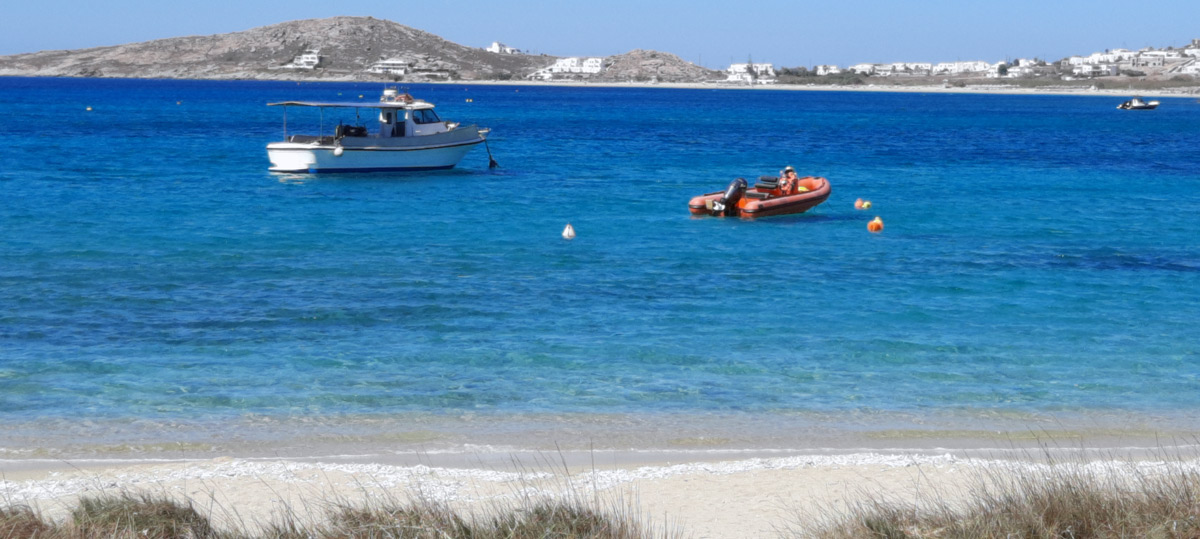
There are different theories to the origins of Náxos’ name. According to some historians, the name is believed to derive from the greek word “Ássos” (Ássos = island), whereas others claim the name comes from Náxo, son of god Apollo, who was the first settler of the island.
In historic records, the island is mentioned as early as 9000 BC, used by sailors as a refuge up until 5300 BC. During the 4th millennium BC, Náxos was inhabited by Cycladítes and served as a commercial centre. In the following years (3200 – 1100 BC), the pinnacle of the Cycladic civilization made Náxos powerful, with a significant military force. Later, between 11th and 7th century BC, Náxos was inhabited by Ionians who strengthened the island even more, there was commercial and financial growth, especially during the reign of tyran Lygdámi (6th century BC). As a result, Náxos was one of the richest and strongest islands in the Aegean.
In the Hellenic – Persian Wars (5th century BC), Náxos with its riches aided the Hellenes at the battle of Plataiés (479 BC). Later, it became a member of the Delian Allience (478 BC) and then of the Athenian Hegemony (454 BC). During the Roman rule (31 BC – 330 AD), Náxos was depopulated and used as a place of exile.
In the 4th century AD, there were no inhabitants in Náxos save a few monks in its monasteries. From the 5th century onwards, the settlers start to arrive on the island. The Byantines build castles in order to defend against the piratic and the Arabian raids, however between the 7th and the 11th centuries, Náxos is being plundered, occupied and destroyed by the Saracens.
At the fall of Constantinople by the Crusaders (1204 AD), the admiral of the Venetians Marco Sanoudo conquers the island, together with many of the Aegean and most of the Cyclades, and makes Náxos his capital. The Venetians rebuilded many settlements, fortified the castles and built some more – in general, they were considered “good” conquerors.
In 1537, the admiral of the Ottomans Barbarossa conquers Náxos and the day turned to night. The Turks took the young men to the galleons or sold them in the slave markets of the east, islamise the ones remaining and the ones who did not want to were killed. An Italian priest visiting the island at the time, wrote that life conditions were wretched, there was extensive famine and women were more than double to the men.
Náxos was freed from the Turks in 1829.

Náxos (Chóra): As you enter the harbour, to the north you can see “Portára” (= large gate) on a small island. Portára is the trademark of the island, you can see it in all the touristic brochures. Portára is also a big marble gate, a remnant from the temple of Apollo in antiquity. The town has 45 Orthodox and Catholic churches. Visit Mitrópoli (18th century) with its rich marble interiors. Inside the church there is a gospel given by the empress Great Catherine of Russia and in its basement a museum.
Visit the Venetian Museum, hosted within the Tower of Della Rocca Barozzi of 1207, with relics dating from the 12th century, the archaeological museum of Náxos, Apalírou castle (or Sanoudo castle), in the centre of the island and built in the Byzantine years (7th century), the village of Apeírathos, with excellent Venetian towers, churches and 2 museums! This village is also known as “marble village”, because most of its buildings are built with local marble.

Apóllonas: A very picturesque village where, close by, was found a colossal half-finished “Koúros” (statue of a youth) from the 6th century BC lying at the entrance to an ancient quarry. There are ruins from a medieval stronghold to the south in the area of Kalógeros. Even if ancient ruins do not pique your interest, ashore there are some cafés and taverns.


